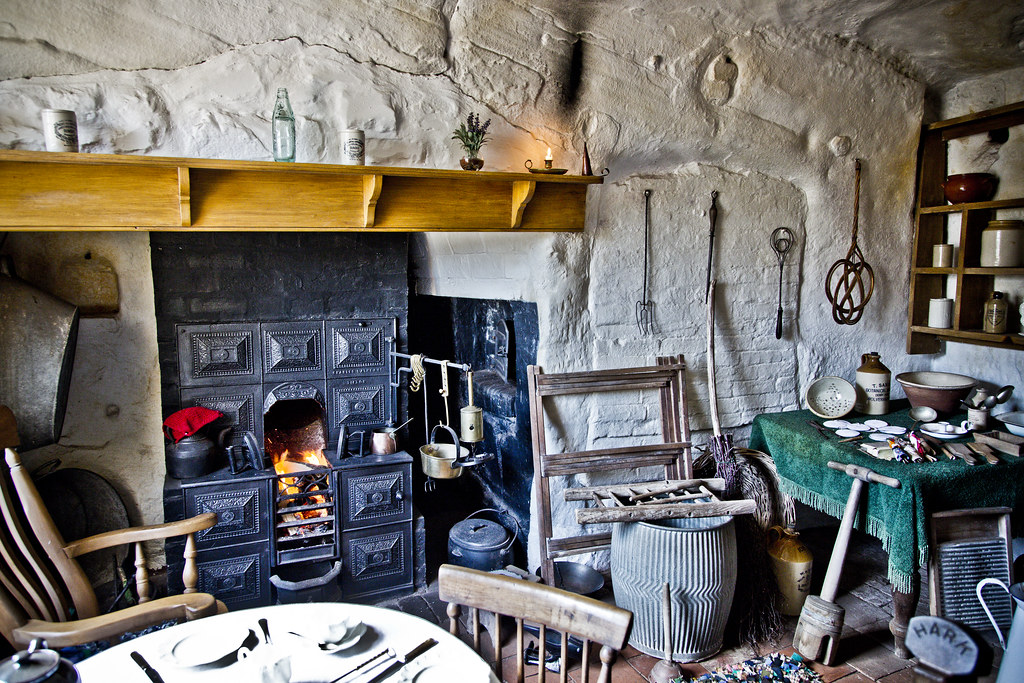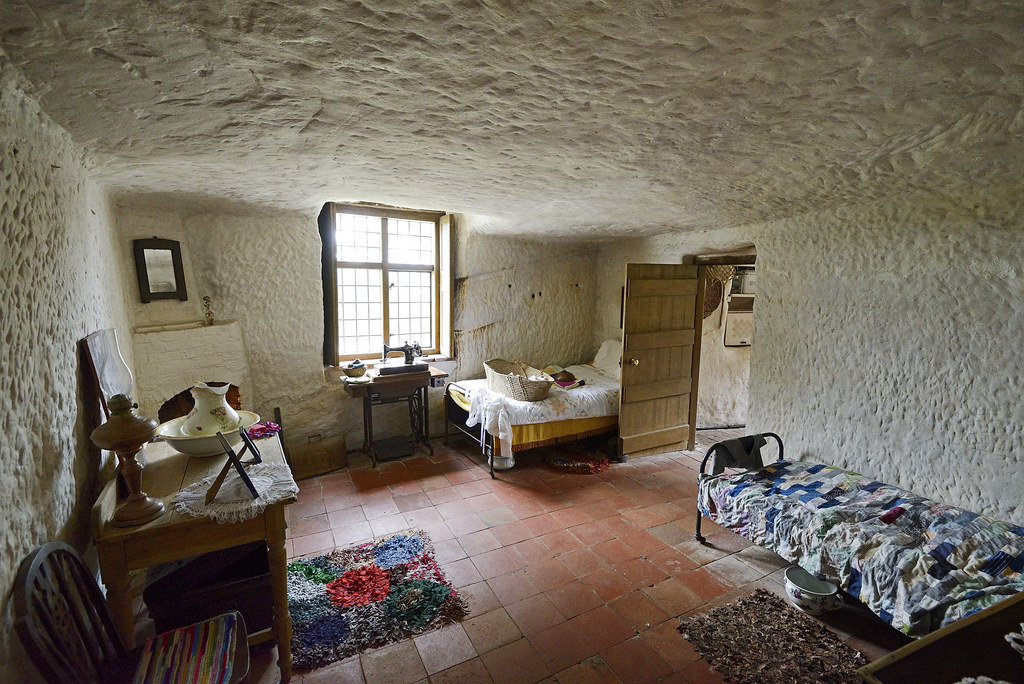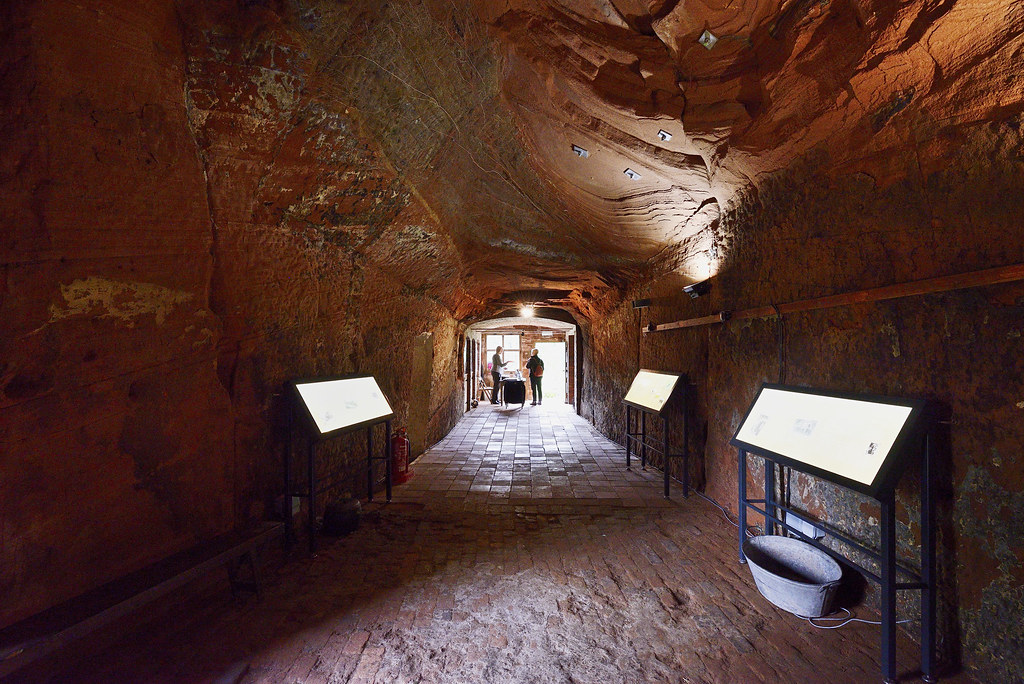Healey scanned the area for a shelter and noticed some smoke rising out of a cleft in the rocks.
Healey was cordially welcomed into one of the houses which he describes as curious, warm and commodious.
He went on to describe how they were well furnished with plenty of provisions and had access to water.
This was the first written account of the Rock Houses of Kinver.
This soft Triassic-era stone is very easily quarried and natural caves can be quickly enlarged to form habitats.
The houses are arranged in two necklaces around a knob of rock called the Holy Austin.
The houses even had electricity, and piped gas and water.
Nobody knows exactly when the first caves were carved.
It is possible that the first permanent inhabitants of the Rock Houses were the descendants of the local quarrymen.
A survey carried out in 1830 found six families living in the cave houses.
At its peak, the complex housed eleven families.
Then one day, while Tolkien was marking exam papers at college, he discovered a blank page.
There are many similarities between the 18th century cave dwellings and Tolkiens description of the Hobbit holes.
Certain stories and legend surrounding the Kinvers rock houses also seem to have been adapted into Tolkiens novel.
There are unmistakable parallels to these stories in Tolkiens novelThe Hobbit.
It is possible that Tolkien visited Kinvers rock houses or read about these remarkable dwellings.
The last families to have lived in the Rock Houses moved out in the 1960s.
After that vandals took away whatever that was of value, including doors and wooden window frames.
Sources:Britain Explorer/BBC/Wikipedia/Independent/Edmund Simons/The Garden Trust









